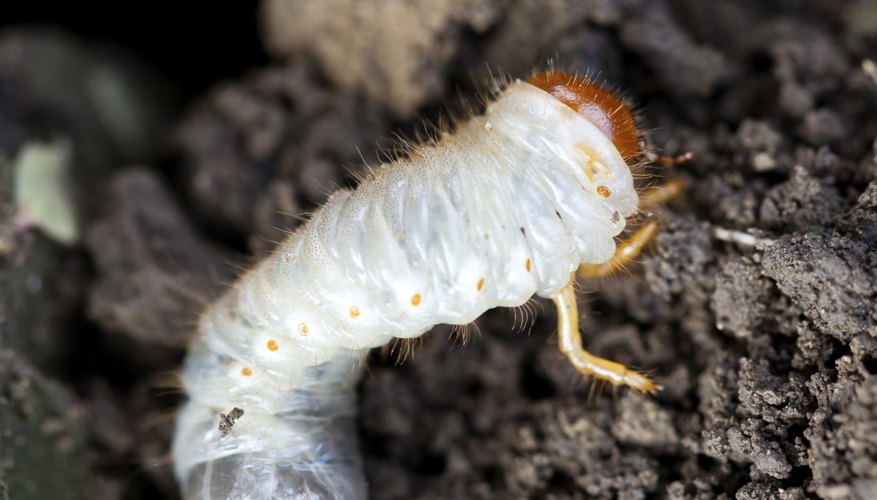A garden grub, or "lawn grub," is the larva of a beetle, such as the European chafer or Japanese beetle. These grubs feed on the roots of your grass causing browning and stunted growth. Once the grub becomes an adult beetle, it emerges from the ground and starts feeding on ornamental plants such as rose bushes. Understand how to identify garden grubs so you know how to get rid of them before they damage your landscape.
Look for brown patches of grass in your lawn to detect signs of garden grubs. Pull back an area of browning sod to uncover the region where the grass meets the soil. This spot is where you're most likely to see grubs.
- A garden grub, or "lawn grub," is the larva of a beetle, such as the European chafer or Japanese beetle.
- Look for brown patches of grass in your lawn to detect signs of garden grubs.
Inspect the uncovered soil for whitish-grey, wormlike forms. Grubs are characteristically C-formed with six appendages toward the front of the head.
Check the soil for pupae, which are grubs encased in a solid covering that protects them as they form into adult beetles. The pupa develops in June before the fully mature beetle is completely formed.
Watch the ground for emerging beetles in July and August. Lawn grubs mature into adult beetles so they can search for mates and food once they leave the ground.
TIP
Garden grubs prefer moist areas that don't have shade and are close to pavement. Rats and voles typically dig in grassy areas at night where grubs are residing.
